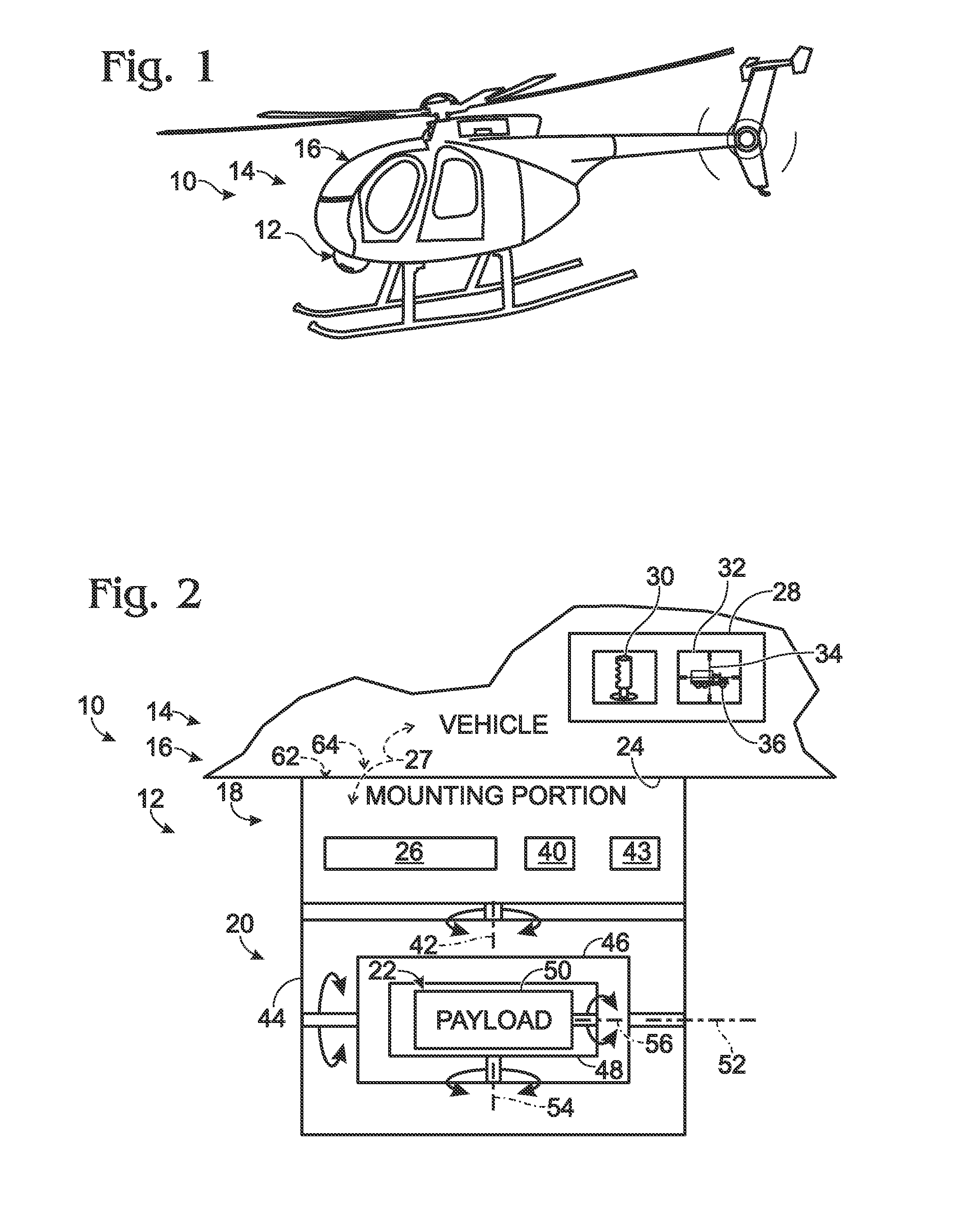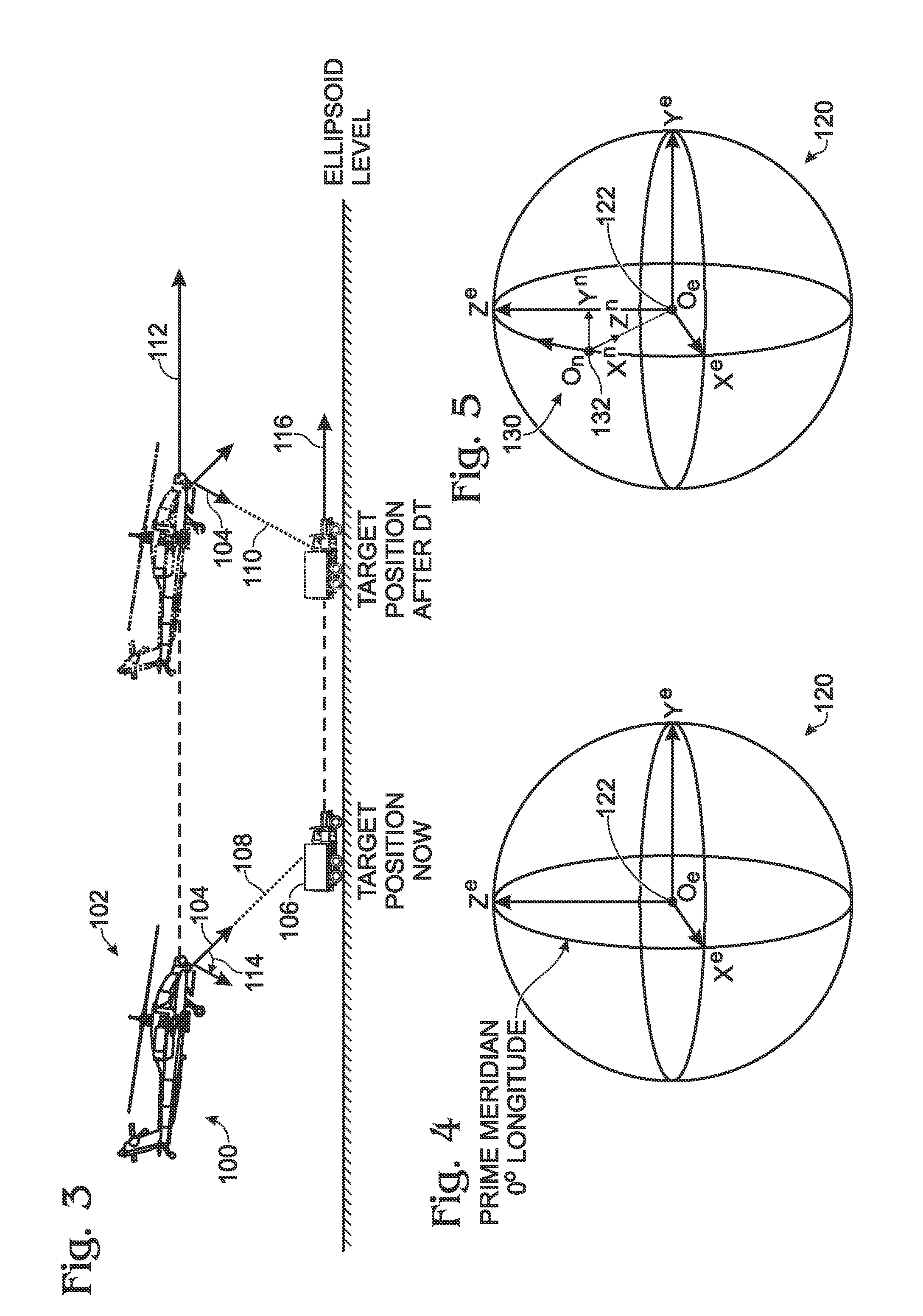Gimbal positioning with target velocity compensation
a technology of target velocity and compensation, which is applied in the direction of instruments, instruments for comonautical navigation, optical radiation measurement, etc., can solve the problem of complicated maintenance of the gimbal pointing toward the target obj
- Summary
- Abstract
- Description
- Claims
- Application Information
AI Technical Summary
Benefits of technology
Problems solved by technology
Method used
Image
Examples
example 1
B. Example 1
[0048]As described above, transforming platform and target positions into gimbal rotation commands that result in pointing a sensor at a target generally may be accomplished through the application of various vector rotations and coordinate transformations. For example, using the previously introduced notation, an exemplary transformation procedure would include the following steps, where it is assumed that the gimbal and target positions are known in the ECEF coordinate system.
[0049]Starting with the gimbal and target position vectors in the ECEF frame, the gimbal to target displacement vector may be determined in the ECEF frame by vector subtraction:
e{right arrow over (X)}ot=e{right arrow over (X)}et−e{right arrow over (X)}eo
The target displacement vector then may be determined in the navigation frame and the optical frame through successive application of the appropriate transformation matrices:
n{right arrow over (X)}ot=Cen×e{right arrow over (X)}ot
o{right arrow ove...
example 2
D. Example 2
[0052]The rates of change of the gimbal azimuth and elevation angles to keep the gimbal line of sight pointed toward the target may be determined from (i) an initially determined target displacement vector in the navigation frame, (ii) initially determined azimuth and elevation angles to point the gimbal toward the target, and (iii) the known or estimated velocities of the gimbal platform and the target, as described below.
[0053]A new target displacement vector may be determined from the previous target displacement vector by subtracting the change in position of the platform and adding the change in position of the target:
n{right arrow over (X)}oT(t+Δt)=n{right arrow over (X)}oT(t)−n{right arrow over (X)}oF+n{right arrow over (V)}TΔt
The new target displacement vector then may be rotated into the optical frame:
o{right arrow over (X)}oT(t+Δt)=Cbn×n{right arrow over (X)}oT(t+Δt)
and then into the gimbal azimuth yoke frame:
gmb{right arrow over (X)}oT(t+Δt)=Cbgmb×o{right ar...
PUM
 Login to View More
Login to View More Abstract
Description
Claims
Application Information
 Login to View More
Login to View More - R&D
- Intellectual Property
- Life Sciences
- Materials
- Tech Scout
- Unparalleled Data Quality
- Higher Quality Content
- 60% Fewer Hallucinations
Browse by: Latest US Patents, China's latest patents, Technical Efficacy Thesaurus, Application Domain, Technology Topic, Popular Technical Reports.
© 2025 PatSnap. All rights reserved.Legal|Privacy policy|Modern Slavery Act Transparency Statement|Sitemap|About US| Contact US: help@patsnap.com



